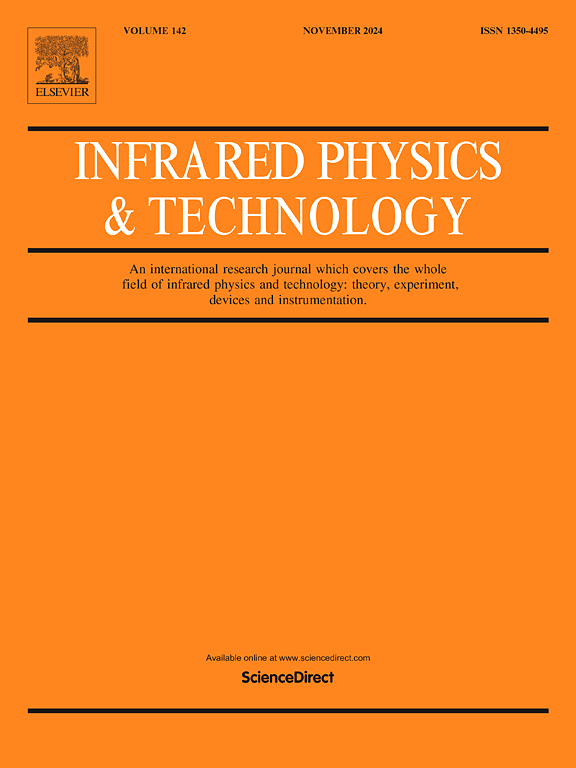用于nir到rgb转换的空间频率引导像素转换器
IF 3.1
3区 物理与天体物理
Q2 INSTRUMENTS & INSTRUMENTATION
引用次数: 0
摘要
近红外(NIR)成像广泛应用于各种应用,与传统的可见光谱成像相比,它提供了更高的灵敏度和对比度。然而,近红外图像固有地缺乏可见彩色图像所拥有的丰富的空间和纹理细节(即具有红、绿、蓝带或RGB图像的图像)。NIR到RGB的转换-将NIR图像转换为RGB图像的过程-已经为此目的进行了广泛的研究。然而,现有方法在nir - rgb转换中面临两个固有的挑战:光谱映射模糊性和统计弱相关性。我们提出了一种新的深度学习架构,称为空间频率引导像素转换器(SF-GPT),用于nir到rgb的转换。具体而言,SF-GPT引入了空间-频率引导多头自注意(SFG-MSA)机制,实现了空间-频率和像素特征之间的有效特征转移。此外,通过降低两个特征域中输入图像的空间维度,我们在不影响信息完整性的情况下减轻了学习过程的复杂性。因此,我们的方法达到了最先进的性能,比现有技术的PSNR高出1.5 dB以上。代码将在https://github.com/jianghongcheng/SF-GPT上提供。本文章由计算机程序翻译,如有差异,请以英文原文为准。
Spatial-Frequency Guided Pixel Transformer for NIR-to-RGB translation
Near-Infrared (NIR) imaging is extensively employed in various applications, providing enhanced sensitivity and contrast over traditional visible-spectrum imaging. However, NIR images inherently lack the rich spatial and texture details that visible-color images possess (i.e., images with red, green, and blue bands, or RGB images). NIR-to-RGB translation – the process of converting NIR images to RGB images – has been extensively studied for this purpose. However, existing methods face two inherent challenges in NIR-to-RGB translation: spectral mapping ambiguity and statistical weak correlation. We propose a novel deep-learning architecture, termed Spatial-Frequency Guided Pixel Transformer (SF-GPT), for NIR-to-RGB Translation. Specifically, SF-GPT introduces a Spatial-Frequency Guided Multi-head Self-Attention (SFG-MSA) mechanism, enabling effective feature transfer between spatial-frequency and pixel features. Additionally, by reducing the spatial dimensions of the input images in both feature domains, we mitigate the complexity of the learning process without compromising information integrity. As a result, our method achieves state-of-the-art performance, surpassing existing techniques by over 1.5 dB in PSNR. Code will be available at https://github.com/jianghongcheng/SF-GPT.
求助全文
通过发布文献求助,成功后即可免费获取论文全文。
去求助
来源期刊
CiteScore
5.70
自引率
12.10%
发文量
400
审稿时长
67 days
期刊介绍:
The Journal covers the entire field of infrared physics and technology: theory, experiment, application, devices and instrumentation. Infrared'' is defined as covering the near, mid and far infrared (terahertz) regions from 0.75um (750nm) to 1mm (300GHz.) Submissions in the 300GHz to 100GHz region may be accepted at the editors discretion if their content is relevant to shorter wavelengths. Submissions must be primarily concerned with and directly relevant to this spectral region.
Its core topics can be summarized as the generation, propagation and detection, of infrared radiation; the associated optics, materials and devices; and its use in all fields of science, industry, engineering and medicine.
Infrared techniques occur in many different fields, notably spectroscopy and interferometry; material characterization and processing; atmospheric physics, astronomy and space research. Scientific aspects include lasers, quantum optics, quantum electronics, image processing and semiconductor physics. Some important applications are medical diagnostics and treatment, industrial inspection and environmental monitoring.

 求助内容:
求助内容: 应助结果提醒方式:
应助结果提醒方式:


